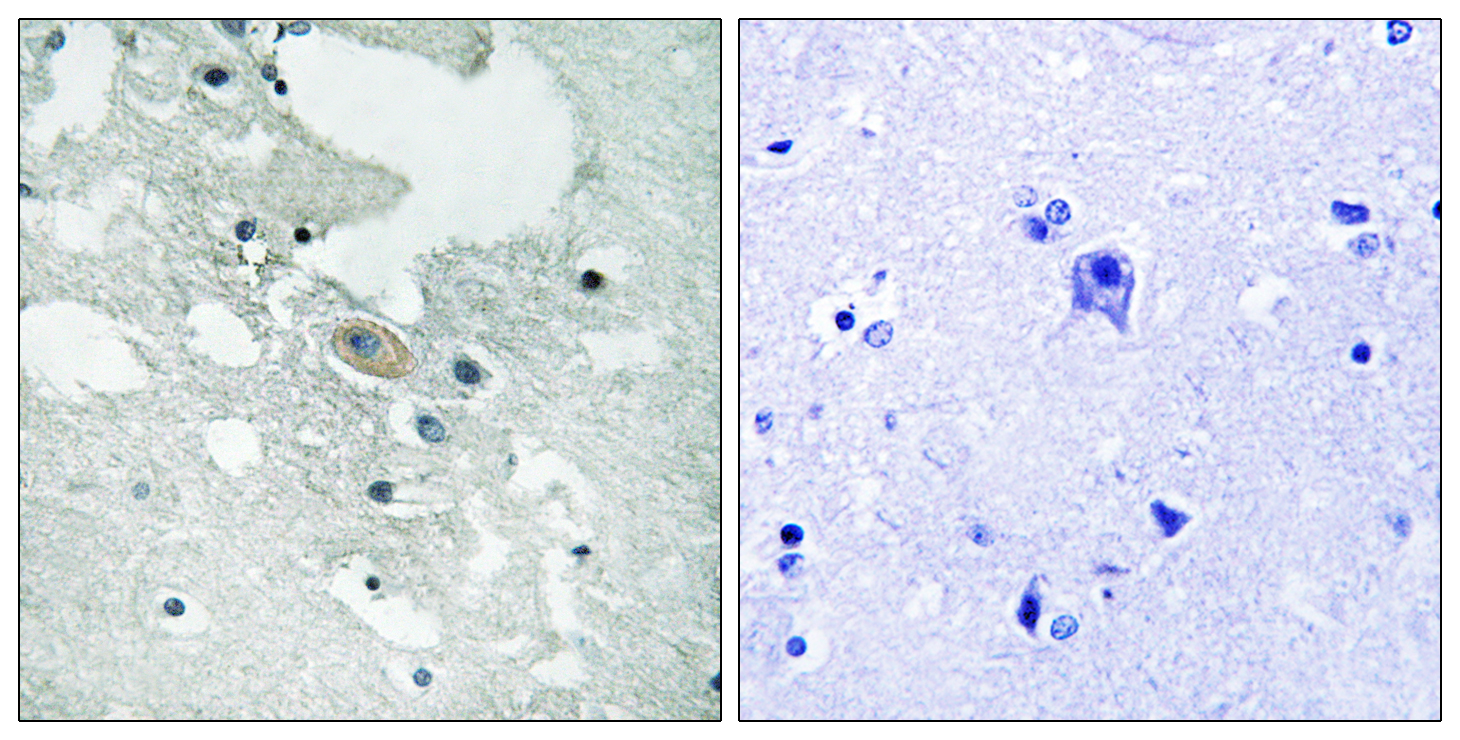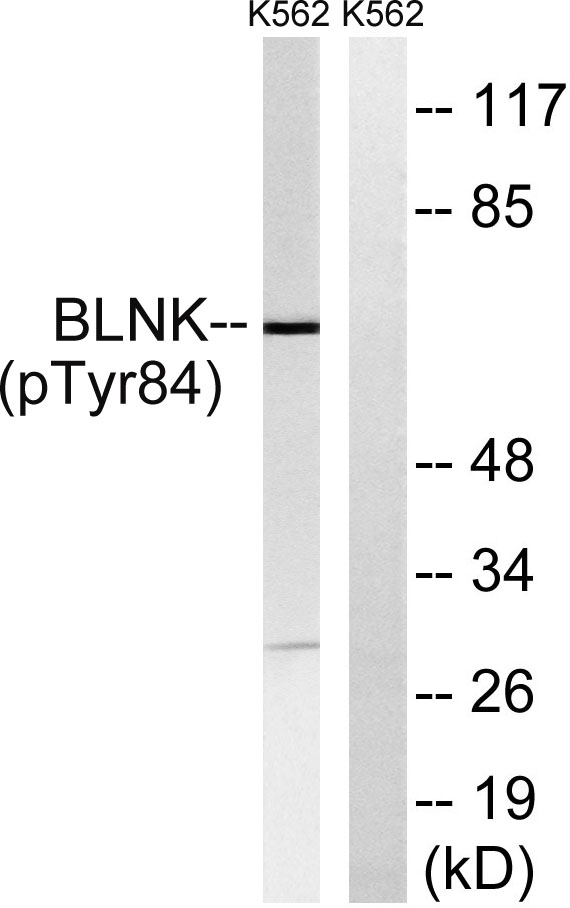BLNK (phospho Tyr84) Polyclonal Antibody
- Catalog No.:YP0802
- Applications:WB;IHC;IF;ELISA
- Reactivity:Human;Mouse;Rat
- Target:
- BLNK
- Fields:
- >>NF-kappa B signaling pathway;>>Osteoclast differentiation;>>B cell receptor signaling pathway;>>Epstein-Barr virus infection;>>Primary immunodeficiency
- Gene Name:
- BLNK
- Protein Name:
- B-cell linker protein
- Human Gene Id:
- 29760
- Human Swiss Prot No:
- Q8WV28
- Mouse Gene Id:
- 17060
- Mouse Swiss Prot No:
- Q9QUN3
- Rat Gene Id:
- 499356
- Rat Swiss Prot No:
- Q4KM52
- Immunogen:
- The antiserum was produced against synthesized peptide derived from human BLNK around the phosphorylation site of Tyr84. AA range:50-99
- Specificity:
- Phospho-BLNK (Y84) Polyclonal Antibody detects endogenous levels of BLNK protein only when phosphorylated at Y84.
- Formulation:
- Liquid in PBS containing 50% glycerol, 0.5% BSA and 0.02% sodium azide.
- Source:
- Polyclonal, Rabbit,IgG
- Dilution:
- WB 1:500 - 1:2000. IHC 1:100 - 1:300. ELISA: 1:10000.. IF 1:50-200
- Purification:
- The antibody was affinity-purified from rabbit antiserum by affinity-chromatography using epitope-specific immunogen.
- Concentration:
- 1 mg/ml
- Storage Stability:
- -15°C to -25°C/1 year(Do not lower than -25°C)
- Other Name:
- BLNK;BASH;SLP65;B-cell linker protein;B-cell adapter containing a SH2 domain protein;B-cell adapter containing a Src homology 2 domain protein;Cytoplasmic adapter protein;Src homology 2 domain-containing leukocyte protein of 65 kDa;
- Observed Band(KD):
- 65kD
- Background:
- This gene encodes a cytoplasmic linker or adaptor protein that plays a critical role in B cell development. This protein bridges B cell receptor-associated kinase activation with downstream signaling pathways, thereby affecting various biological functions. The phosphorylation of five tyrosine residues is necessary for this protein to nucleate distinct signaling effectors following B cell receptor activation. Mutations in this gene cause hypoglobulinemia and absent B cells, a disease in which the pro- to pre-B-cell transition is developmentally blocked. Deficiency in this protein has also been shown in some cases of pre-B acute lymphoblastic leukemia. Alternatively spliced transcript variants have been found for this gene. [provided by RefSeq, May 2012],
- Function:
- disease:Defects in BLNK are the cause of hypoglobulinemia and absent B-cells [MIM:604515]. This is a developmental blockage at the pro- to pre-B-cell transition.,disease:In 6 of 34 childhood pre-B acute lymphoblastic leukemia (ALL) samples that were tested showed a complete loss or drastic reduction of BLNK expression.,function:Functions as a central linker protein that bridges kinases associated with the B-cell receptor (BCR) with a multitude of signaling pathways, regulating biological outcomes of B-cell function and development. Plays a role in the activation of ERK/EPHB2, MAP kinase p38 and JNK. Modulates AP1 activation. Important for the activation of NF-kappa-B and NFAT. Plays an important role in BCR-mediated PLCG1 and PLCG2 activation and Ca(2+) mobilization and is required for trafficking of the BCR to late endosomes. However, does not seem to be required for pre-BCR-mediated ac
- Subcellular Location:
- Cytoplasm . Cell membrane . BCR activation results in the translocation to membrane fraction.
- Expression:
- Expressed in B-cell lineage and fibroblast cell lines (at protein level). Highest levels of expression in the spleen, with lower levels in the liver, kidney, pancreas, small intestines and colon.
- June 19-2018
- WESTERN IMMUNOBLOTTING PROTOCOL
- June 19-2018
- IMMUNOHISTOCHEMISTRY-PARAFFIN PROTOCOL
- June 19-2018
- IMMUNOFLUORESCENCE PROTOCOL
- September 08-2020
- FLOW-CYTOMEYRT-PROTOCOL
- May 20-2022
- Cell-Based ELISA│解您多样本WB检测之困扰
- July 13-2018
- CELL-BASED-ELISA-PROTOCOL-FOR-ACETYL-PROTEIN
- July 13-2018
- CELL-BASED-ELISA-PROTOCOL-FOR-PHOSPHO-PROTEIN
- July 13-2018
- Antibody-FAQs
- Products Images

- Immunohistochemistry analysis of paraffin-embedded human brain, using BLNK (Phospho-Tyr84) Antibody. The picture on the right is blocked with the phospho peptide.

- Western blot analysis of lysates from K562 cells treated with starved 24h, using BLNK (Phospho-Tyr84) Antibody. The lane on the right is blocked with the phospho peptide.



